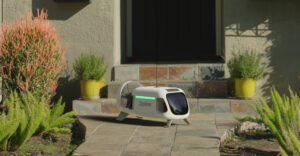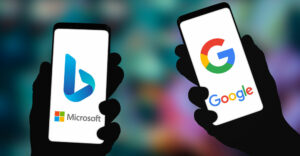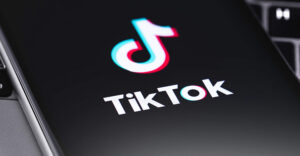August on Tuesday introduced a new smart doorbell to its product lineup. The August View, priced at US$230, is a wireless doorbell that can stream sharp 1440p HD video. It supports two-way audio, so you can talk to guests via an Internet connection.
The View can be paired with August and Connected by August smart locks. That means you not only can speak to visitors remotely, but also can let them into your house. That functionality can be handy for accepting package deliveries when you’re not home.
August has designed the View to be slim and sleek for location flexibility. The eight interchangeable faceplates will satisfy a variety of home aesthetics. The faceplates include four made of metal — satin nickel, oil-rubbed bronze, satin brass and midnight gray — and four in solid colors — black, blue, red and white.
Other features include instant motion alerts when someone approaches the doorbell, minimal fisheye distortion, zoomable video to improve identification of package thieves or unwanted visitors, a rechargeable battery, and a wireless chime.
Better Video Quality
The August View has a number of features that distinguish it from the smart doorbell competition and should endear it to consumers.
“Most other video doorbells on the market today are only 1080p, with the exception of Nest Hello, so this is a differentiator for August,” observed Blake Kozak, lead analyst for smart home research at IHS Markit, a research, analysis, and advisory firm headquartered in London.
“Being battery-powered is also a differentiator, since most of the competition has moved to requiring constant power,” he told TechNewsWorld. “For homes without an existing doorbell, this is a real advantage.”
In addition, August View will include short video clips for free, which is a big differentiator from top players Ring and Nest. However, another competitor, SkyBell, offers no fees for cloud storage of video, Kozak noted.
“August View will win points with consumers for having a few ‘free’ elements, but a monthly subscription fee is still required for full capabilities,” he added.
The wireless chime included with View also separates the doorbell from the pack.
“A chime is usually an add-on extra, something you’d have to pay extra for,” said Brad Russell, an analyst at Dallas, Texas-based Parks Associates, a market research and consulting company specializing in consumer technology products.
“August is trying to offer more value for less money and compete more effectively against Ring in the consumer channel,” he told TechNewsWorld.
View also supports Alexa and Google Assistant, two major voice command technologies.
“Support of Google Assistant can be a potential advantage for View,” said Ross Rubin, the principal analyst with Reticle Research, a consumer technology advisory firm.
“That’s something the leader in the field, Ring, probably won’t be doing any time soon, since it’s owned by Amazon,” he told TechNewsWorld.
Some Drawbacks
The new View has some disadvantages. The battery will have to be recharged periodically, for example. To fill in gaps during recharges, a second battery likely would have to be purchased.
“There are also no advanced analytics which can detect people or packages,” IHS Markit’s Kozak noted.
“There is no option to select recording zones, either,” he continued. “This is especially useful if there is a busy street or other objects or shadows that could create false alerts.”
While the redesign is a step forward for August, View is still larger than the latest units from its competition, Kozak pointed out.
“What August lacks is the wider security aspects of Ring,” said San Jose, California-based Kevin Krewell, a principal analyst at Tirias Research, a high-tech research and advisory firm.
“Ring has created an organized community of people who share crime- and security-related videos,” he noted.
“Another aspect of Ring I like is its integration into the Amazon Alexa ecosystem,” Krewell added. “I can use the Amazon Echo Show to see video from the Ring doorbell.”
Package Delivery Essential
Video doorbells are one of the fastest-growing products in North America, Kozak observed.
“Within three years, it is expected there will be more annual sales of video doorbells than consumer video cameras, such as Arlo and Nest,” he said.
“They’re very, very hot right now,” said Russell.
In a recent Parks Associates survey, 25 percent of participating U.S. broadband households said they intended to buy a video doorbell in the next year — the highest percentage for any smart home device.
The purpose of the video doorbell has evolved since they were introduced in 2015, Russell noted.
“Their initial primary value proposition was to scare off would-be burglars by acting like you’re home when you’re anywhere in the world,” he said.
That changed “with e-commerce and Amazon delivery to the home and all this package traffic. That’s really become one of the primary value propositions of video doorbells — picking up packages off the porch before someone steals them,” Russell continued.
“The value of the video doorbell is more than talking to guests that show up on your doorstep,” he added. “That’s what’s driving adoption.”
Growth of Home Access Control
Along with package delivery to the home, video doorbells dovetail nicely with another trend: access control to the home.
Amazon offers delivery of packages directly into the home, for example. Grocery stores offer similar delivery services.
“Smart devices give you a way to share doorlock codes and use video confirmation for your dog walker and your plumber and any other third-party service that might need access to your home,” Russell noted.”Video doorbells and smart locks will pave the way for a whole new level of third-party services that will be coming into the home.”
Consumer interest in the smart home continues to rise. In 2018, device revenue in North America grew by 56 percent. In 2019, growth is expected to be similar, said Kozak.
“This growth and adoption is the result of consumer awareness driven mostly by inexpensive smart speakers, such as Amazon’s Echo Dot and the Google Mini,” he observed.
Another driver is the expansion of platforms and portfolios.
“Consumers will soon be able to buy an Arlo SmartHub to control lights and other devices in the home,” Kozak said.
“Consumers could also connect many smart home devices directly to a smart speaker,” he added. “These advances in portfolios, as well as efforts by retailers such as Best Buy to educate consumers, has helped sustain strong growth.”













































Anything with the word SMART in front of it (possibly with the exception of the smart car) is there to make it easier for the system to spy on you! Get a HDTV and connect it to a computer that has no microphone or camera